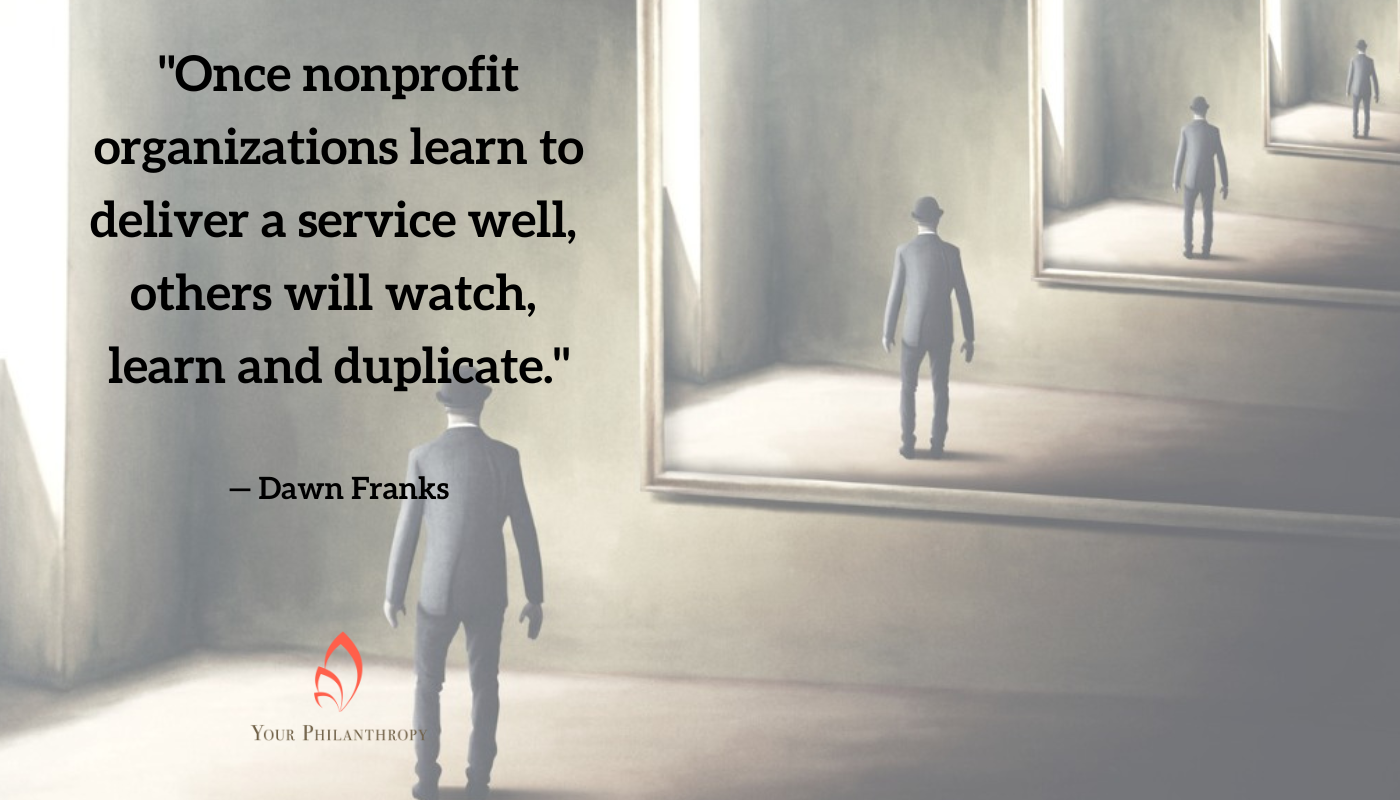Sitting across the table was a gentleman I had just met. He excitedly described how the new nonprofit he envisioned, would change lives. Almost breathless between sentences, his vision ended with this new nonprofit organization spanning the country in every community.
Not wanting to dampen the enthusiasm, I sat back and listened.
Finally, he paused, so I asked a tough question. Have you talked with any existing nonprofit organizations to find out if any are providing similar or even the same services?
While shaking his head no, his enthusiasm dropped several levels.
Shifting gears, he suggested it didn’t matter because the client population and geographic area would be different. No need for research; he was sure of his idea.
I’ve had many of these conversations over the years. Sometimes I try to explain that what I’m hearing sounds like a duplication of service and try to make helpful suggestions, often to no avail.
In the world of science, duplication has a specific meaning. It means one thing is exactly like something else. It has been copied.
In the nonprofit world, the definition of duplication is not as simple. As a result, donors are often confused and frustrated by what looks like two organizations providing the same service.
Nonprofit organizations are even frustrated with each other when services and missions seem the same on the surface. Yet, despite the frustration, they are not confused.
Ask any nonprofit organization to explain how their services differ from another organization’s, and they will have an answer.
- The service is the same, but the target audience is different.
- We serve families, and they only serve children.
- Our names are similar, but the services are different.
Location, Location, Location
The demand for services increases as communities grow. Perhaps, it’s about location. The adage location, location, location rings true here, just as in real estate and restaurants.
Services are most needed right where people live and work. Sometimes duplication is a necessity.
When we encounter what looks like duplication, it is our job as donors to learn more. An informed donor is always a smarter donor.
What if duplication does exist? Is it really bad? Again, there’s no simple answer.
A Donors Perspective
Some donors view duplication as waste related to multiple administrative and overhead costs.
Donors often feel pressured to meet the fundraising needs of multiple organizations. And that results in too many letters in donor mailboxes or fundraising events to attend.
A Nonprofits Perspective
The need is so great it takes many different organizations to meet the demand for service.
The needs are complex requiring different strategies, solutions and expertise.
The community is growing. Demand for services is growing, and we recognize new needs we can meet.
The Inevitable
Helen Gahagan, one of the first women to serve as a U. S. Representative in 1944, described duplication as inevitable. “In trying to make something new, half the undertaking lies in discovering whether it can be done. Once it has been established that it can, duplication is inevitable.”
Here is my 2022 version of that quote: Once nonprofit organizations learn to deliver a service well, others will watch, learn and duplicate.
Why Not Just Merge?
Finally, we should ask why small organizations don’t merge to serve the broader community. It certainly seems like it would be more efficient. Fewer donor dollars going to overhead and more dollars to services is attractive to most donors.
I’ve witnessed at least six merger conversations over the past twenty years, and only one resulted in a merger. In not a single case did duplication of service exist, rather the potential of synergy between two organizations and more efficient service delivery.
Merger discussions end for many reasons but almost always have strong elements of ownership as driving forces that keep them apart. We could speculate on whom to blame, but it doesn’t change the outcome for you and me as donors.
It is still our work to be informed and decide where to invest resources. Donating to a nonprofit organization is a gamble on the leadership – the executive director and the board of directors.
Don’t let possible duplication stop your donation. Educate yourself to understand what makes organizations different, then decide if and how to give.
Share your thoughts on nonprofit duplication. We get smarter together.
Like it? Use it. Share it. Comment below.


Dawn: This article reminded me of the time when the private foundation I led tried to address this issue one year by offering 5 $100,000 “challenge” grants to area nonprofits if they would collaborate in someway in providing their services. We asked for RFPs. Maybe we didn’t communicate this offer very well, but we didn’t receive a single response. Not sure what this means. Fred
One of the best articles I’ve read on this topic of duplication. Thank you for giving me a lot to think about in a quick article, Dawn. Your experience really shows!